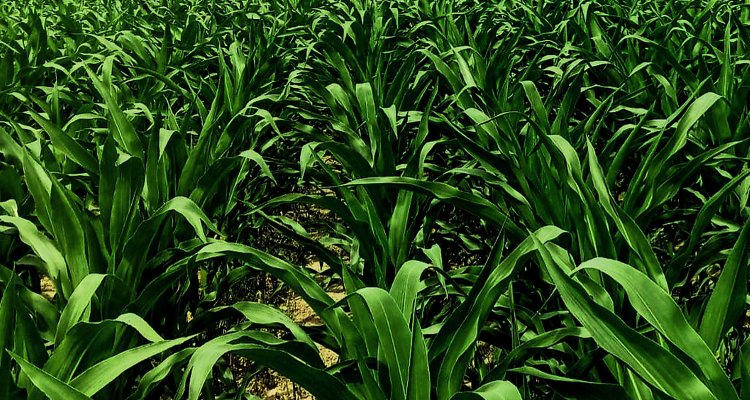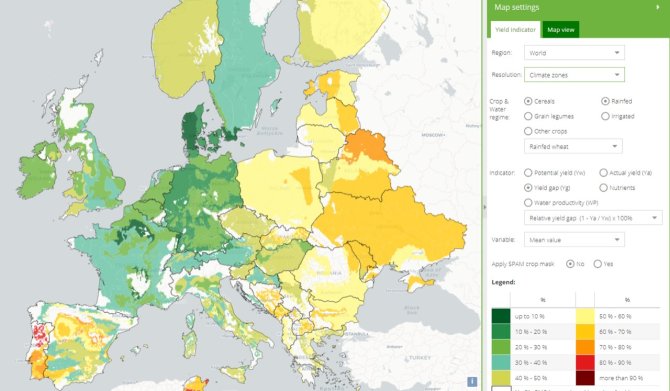
Project
Global Yield Gap Atlas
The Global Yield Gap Atlas (GYGA) offers high-quality and locally relevant data on yield potentials and yield gaps, water productivity, nutrient requirements, and other agronomically relevant data such as weather, soil and crop management. GYGA has coverage of up to 13 food crops across 70+ countries. Over the past five years, the platform has achieved over 30,000 data downloads by users from private, public and non-profit sectors and many more website visitors.
Background
Feeding a growing population within ecological planetary boundaries is one of the grand tasks of humankind in the 21st century and at the heart of multiple Sustainable Development Goals (SDGs). While how this is done will vary across the world, as influenced by each country’s phase of economic development, culture, and endowments of climate, soil, and water resources, in all cases effective priority setting for research and development requires accurate data on crop yields and use of natural resources, achieved with both current production methods and improved ones. This insight reveals the scope to enhance production with sustainable use of finite natural resources and limited environmental impact. Effective priority setting also requires sufficient local and global rigour of the data to allow for well-informed and well-targeted interventions in terms of geographical regions, agricultural systems, and ex-ante assessment of potential impact. To fill this void, the Global Yield Gap Atlas (GYGA) was established in 2011 with the goal of providing public access to accurate estimates of actual and potential yields, yield gaps and the use of land, water and nutrients for all key production areas of major food crops worldwide.
Project description
To make this a feasible proposition, GYGA scientists developed a novel “bottom-up” spatial framework to organise soil, climate, and cropping system data, which in turn enabled focus on the key production areas of the most important food crops in each food-producing country. The framework thus minimises the number of locations from which data are required to obtain robust estimates of yield gaps and required water and nutrient inputs at regional and national scale. Preference for use of primary data and the need for local knowledge of agronomic practices used to produce the major food crops also drives the need for collaboration with leading agronomists in countries that are included in the Atlas. GYGA now provides a rigorous, publicly available global database that can simultaneously address questions that involve trade-offs among food production, finite resources and environmental impact.
Results
GYGA is used for three overall purposes: a. a foundation for detailed on-the-ground studies to understand yield gaps and identify options for increasing food production while conserving natural resources; b. ex-ante and ex-post impact assessment of R&D investments and technology use; c. quantitative foresight studies on food security and natural resources.

In summary, the GYGA collaboration has developed a robust methodology for estimating yield gaps at local to global scale and the database as well as the methods and underpinning data are made available to the public for research and education. As such, it is now the world’s leading agronomic database on crop yield gaps and natural resource use supported by transparent and detailed protocols and expertise from national experts worldwide. It provides decision makers with robust data to develop pathways in sustainable agricultural development and resource use and conservation.
Since 2011, the platform has achieved almost 25,000 data downloads by private/public/non-profit sectors including agricultural input companies (e.g. seeds, agrochemicals, biostimulants), consultancy companies, financial agencies, governments, donors, research institutions, and NGOs as reference points for strategic decision making and research on yield optimisation. The project resulted in many, often highly-cited, publications (see below). Since 2020 it has a value creation programme with licenses and sponsors.
Publications
-
Daily bias-corrected weather data and daily simulated growth data of maize, millet, sorghum, and wheat in the changing climate of sub-Saharan Africa
-
Intensifying rice production to reduce imports and land conversion in Africa
Nature Communications (2024), Volume: 15, Issue: 1 - ISSN 2041-1723 -
Climate change impact and adaptation of rainfed cereal crops in sub-Saharan Africa
European Journal of Agronomy (2024), Volume: 155 - ISSN 1161-0301 -
Grain legume production in Europe for food, feed and meat-substitution
Global Food Security (2023), Volume: 39 - ISSN 2211-9124